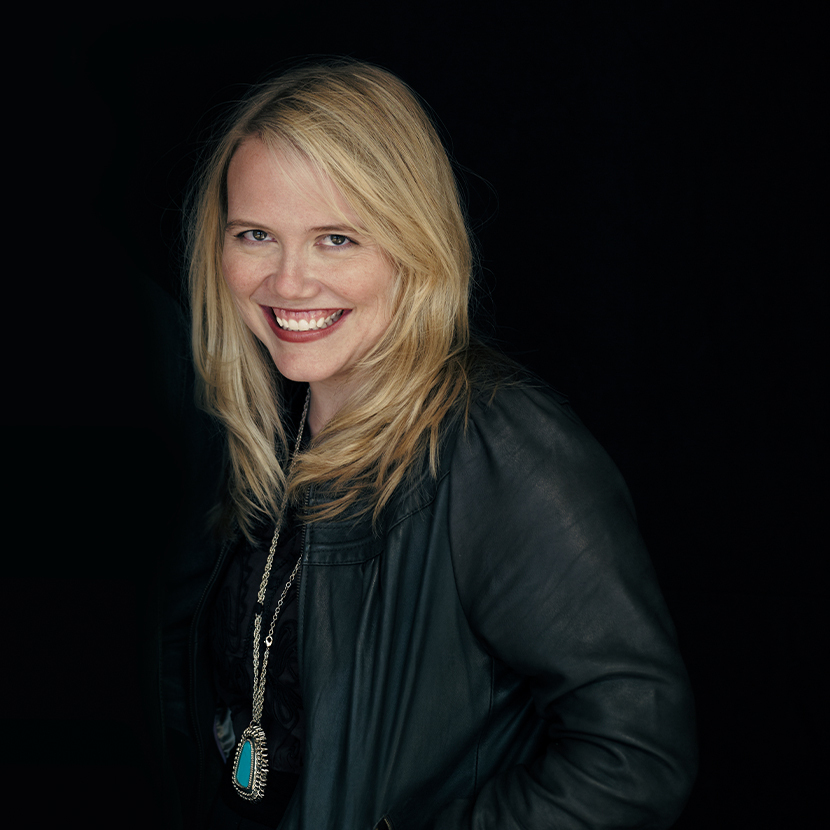Creativity is a paradoxical pursuit: The craft of making requires vulnerability and a certain kind of tenderness or openness to the world around us. At the same time, putting our work out in the world today can take a shit ton of courage and tenacity. This is a space to shine a light on the folks who are straddling these tensions and making us all a little better with their art. —Brené
“Squat ‘n’ Gobble.” Those words — aglow in bright-orange neon and backdropped by an equally luminescent outline of the shape of Texas — hang large in Brené’s podcast studio, a fitting representation of the vibrancy of the nearly 180 conversations that have been recorded in that space to date.
The 6-foot-by-6-foot piece is the work of Evan Voyles, an Austin-based, Yale-educated artist whose vintage sign finds and custom neon pieces have become fixtures across the city.
Back in the late 1980s, though, Evan was just an everyday antiques dealer. But finding a broken neon sign for $20 on a back road in New Mexico would change all that (“That’s when all hell broke loose,” he says with a laugh). After that first find, Evan transformed into a full-blown neon-sign artist and vintage-sign collector. From his company, the aptly named Neon Jungle, he’s made at least 500 signs over the past almost 40 years and has another 400 vintage signs in his collection, which he hopes to house in a neon museum, a project he has been dreaming about for years.
“For me, neon signs are about basic communication between humans. I hope my signs make people’s heads spin, their jaws drop, and want to turn their car around because they feel so drawn to a place because of the sign,” he says. “Does it make you feel something? That’s what I am after.”

Did you find this work or did it find you?
Both. I fell in love with vintage neon signs as a form of American folk art and began collecting them. In the course of learning to “restore” them, I became familiar with their construction methods and vernacular, and when I became frustrated at my inability to purchase a certain type of sign (a coffee cup), I attempted to build my own, using all that I had observed and lacking all that I would later learn. The result was both glorious and pathetic but would lead to more efforts and eventual success.
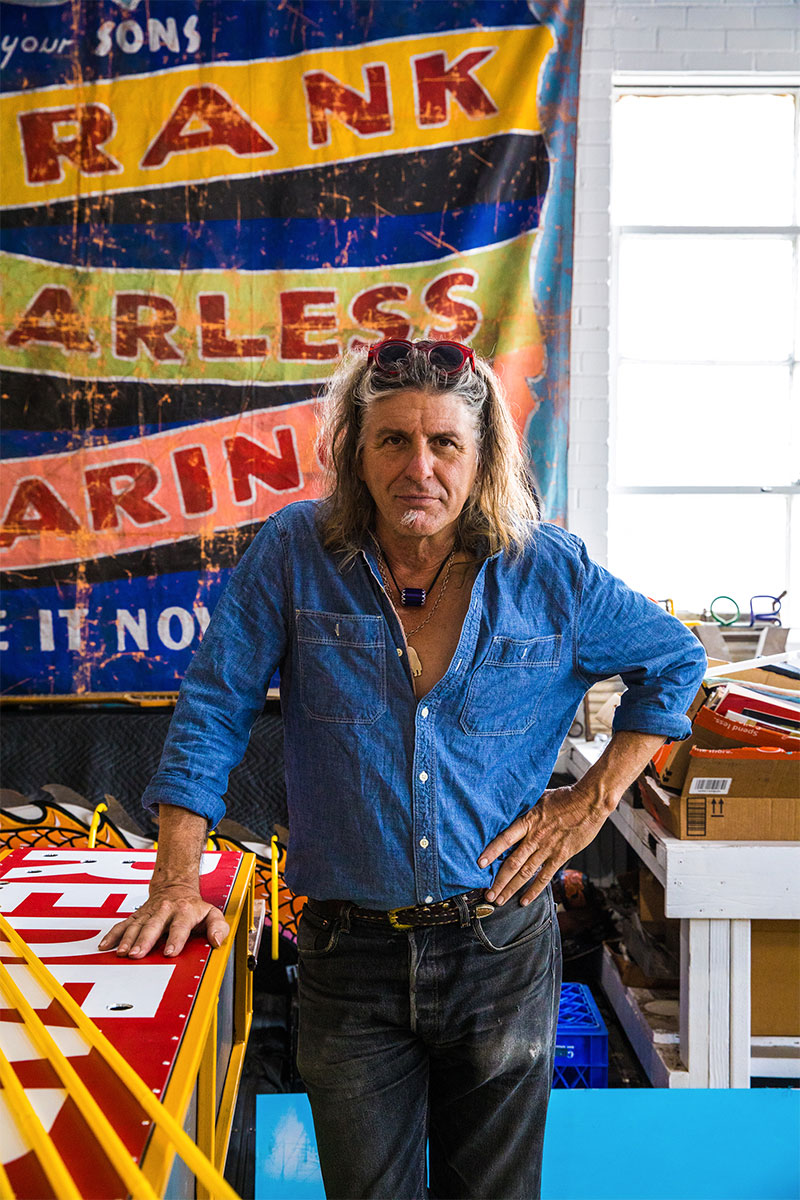
Evan Voyles’ latest project, which he says he will be working on for the rest of his life, is restoring an “urban château” that was built in 1879 outside Paris, France, with his wife, Gail Chovan (not pictured), a fashion designer and professor at the University of Texas. He is pictured here in his studio in Austin, Texas.
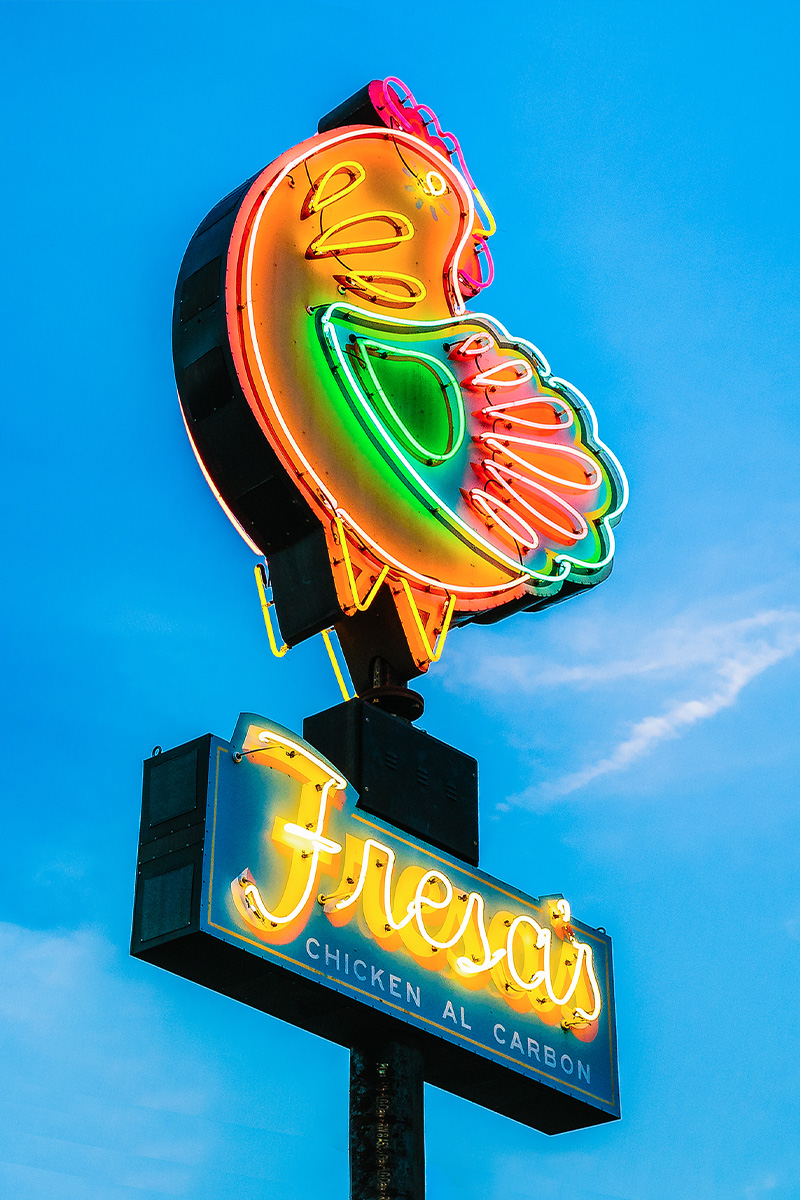
Evan’s neon chicken lights up Mexican food favorite Fresa’s on South First Street in Austin.
I hope my signs make people’s heads spin, their jaws drop, and want to turn their car around because they feel so drawn to a place because of the sign.
What do you enjoy most about creating?
Whatever idea I am going to have for a sign project usually “hits” me in the first five minutes I am on-site and observing the surroundings and situation. This idea is a gift, and I do not take it for granted, and if it does not arrive intact, I do not take the job. I enjoy this gift and, of course, depend on it! Once I have the idea, I create the neon pattern, usually on my kitchen counter at home, and this expression of the idea is both crucial to the process, and the most enjoyable part of the process, and once I have that pattern, the rest of the project is simply execution of the pattern and plan. So together the idea and the execution of the pattern of the idea are the true heart of the project for me, and will determine the execution, which I also enjoy, even when it is difficult.
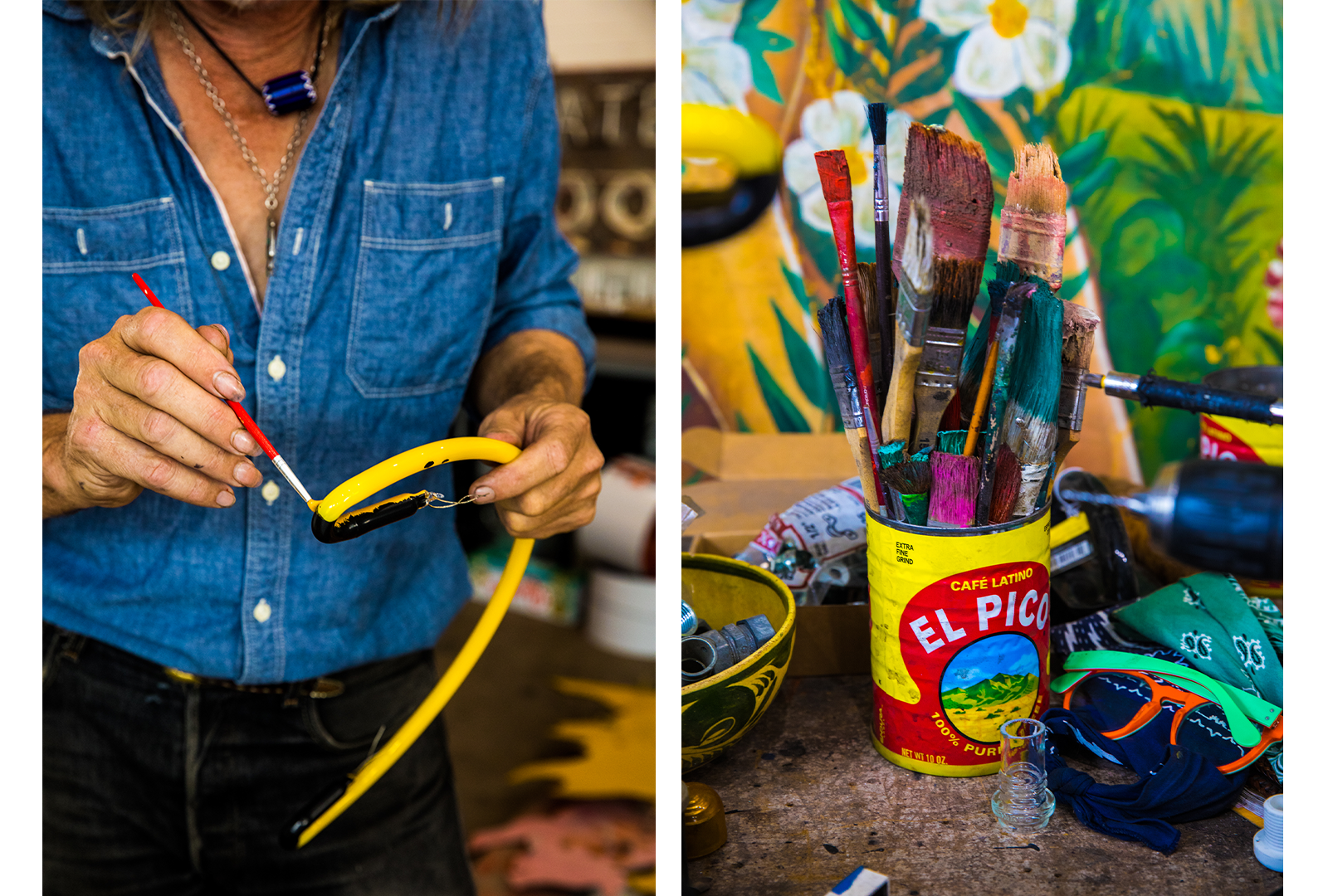
Is there a part of the creative process that’s tougher for you than other parts?
The hardest part of the process for me is the steel armature, which is often internal and external, and I always do this part myself, alone and focused. It is the skeleton that will hold everything aloft, and so even though it will likely be either hidden from view or ignored by the viewer, it is extremely important, in both the short and long terms. I learned the rudiments of welding steel as a child at our family’s ranch, and so when I am welding, I am using long-held beliefs and skills about the possibilities of steel as a means of simulating magic!
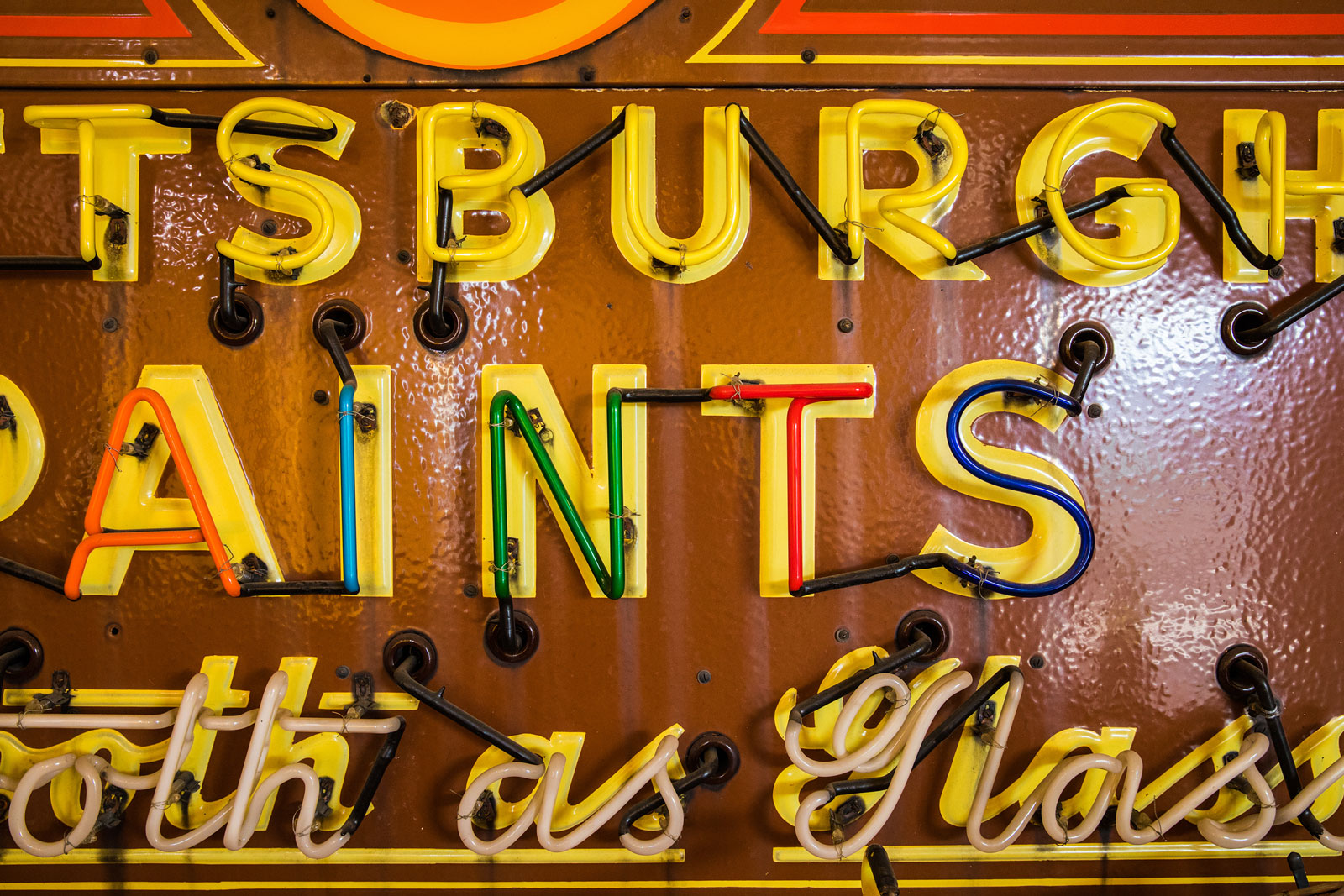
What are three words you use to describe your creative process?
Intuitive (the idea appears to me without derivation by me). Pursuant (the execution of the idea into an object follows rules and ethics established long before my time but rigorously upheld by me). Exclusive (the finished object is not about me, or the client, or the viewer, but it is about the message it is designed and assigned to deliver, and ideally it (the object sign) will seem so natural in its environment that the viewer will wonder how they missed it before, and how long it has been there).
Putting your work out in the world can be hard. Do you ever wrestle with perfectionism and/or get sidelined by criticism?
Perfectionism is not a problem for me because my work is never perfect, and I accept and welcome that release from responsibility! I am my own most-strident critic, and I try to answer those criticisms before the work is done. If not, I try to grudgingly move on anyway, because it is difficult to go back!
Favorite bumper sticker? It can exist, or you can make it up!
“My other truck is a pair of cowboy boots!”


